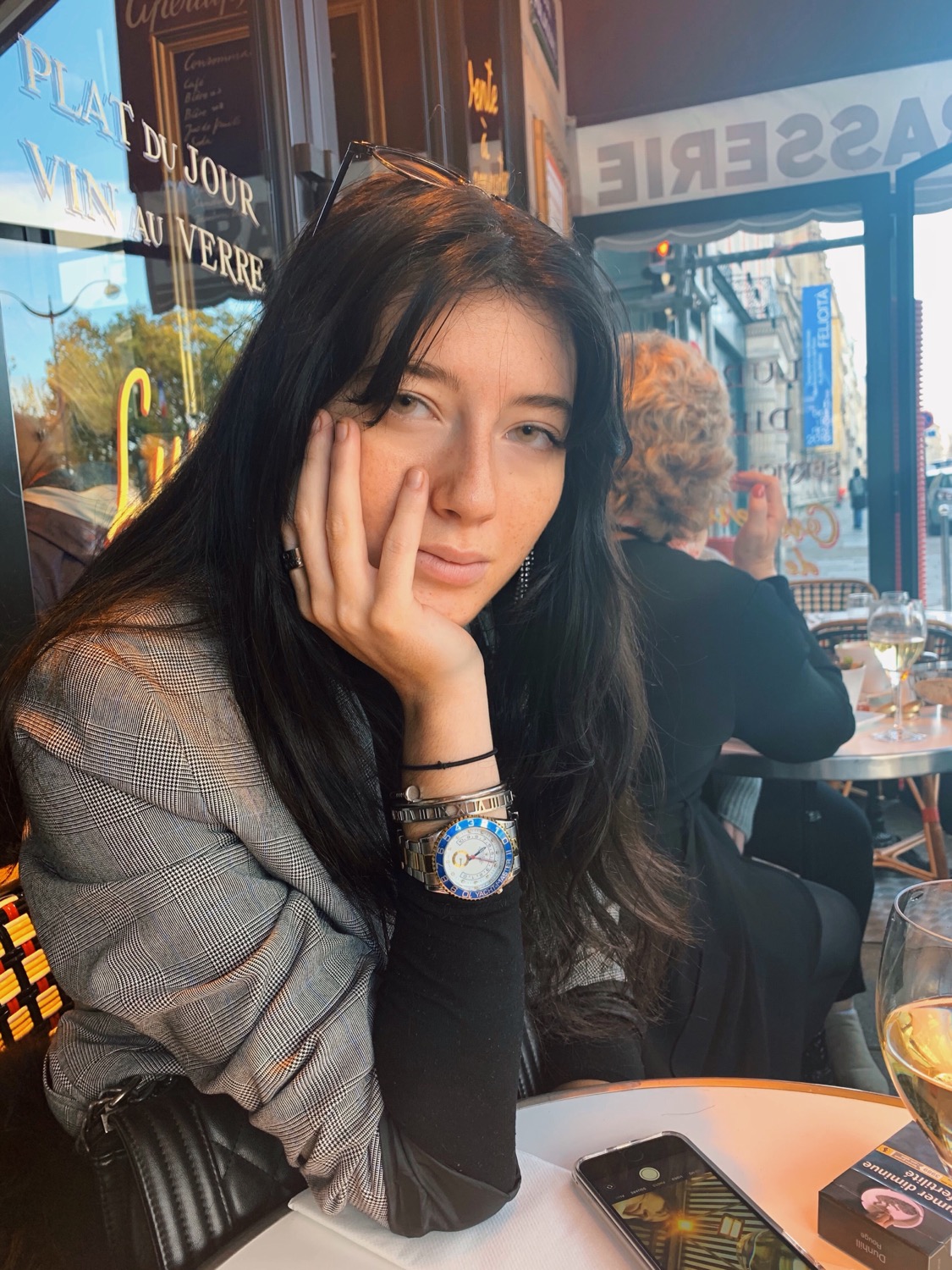FETCH FEATURES | THE RAPTUROUS RED OF SARA POPE
- Victoria Comstock-Kershaw
- Dec 7, 2023
- 5 min read
From Dali's Mae West-inspired sofa to Warhol's pop prints, red lips have become one of pop art's most iconic and inexorable symbols. None, however, have mastered the art of painting this distinctive feature as much as Sara Pope. Her glossy, vibrant mouths capture not just the physicality of lips but also the essence of sensuality, passion, and power. The slick finish, striking neons and dazzling crystals add a lustrous, lifelike quality, as if the lips are on the brink of imparting a sexy secret with you. Ahead of her latest solo exhibition RED at Grove Gallery, Pope sits down with Fetch London to discuss the psychology of colour, the qualities of lips, and linking up her heartbeat to her work.

Rasberry Rouge, oil on gesso covered wood panel, 110 x 115.3cm
Your upcoming exhibition, "Red," explores the sensuality and seductive power of the color red. Could you share more about why you chose this particular color and its significance in your work?
Since first putting brush to canvas, I have always been drawn to the colour red more than any other colour. My brushes, studio, painting clothes, consistently splattered red. At one point I wanted to know, why?? On delving into it further, I discovered the unique power that red holds to excite and incite, it’s one of the strongest colours, provoking a psychological and emotional reaction. In a room full of colours, red is the colour you notice first, it demands your attention. There’s a reason for this, in that it literally reaches your retinas first, having the longest wavelength of all the colours on the visible spectrum. This also has the effect of exciting your nervous system, which is why red is synonymous with passion, danger and lust. Hence combining the colour red with the mouth (already a very compelling, sensual subject) creates a striking and evocative combination.
From makeup brush to the finished piece, could you walk us through your creative process when creating your works?
When I’m creating a lip portrait, the process begins with choosing a subject. I invite my subject to my studio for an in depth study, where I get to work with a makeup brush and a lipstick. I paint the subjects’ lips, then, using specific techniques of makeup and lighting, I begin the process of capturing my subjects’ unique expression, through an extensive photographic study. These shots provide the foundation from which I draw inspiration to start the painting. My painting process involves several layers of thin oil-diluted paint being overlaid, blending and smoothing the colours extensively at every stage, sometimes also mixing lipstick into the paint. Emulating the stylistic slickness of fashion and advertising, the result is glossy, perfect and irresistible.

Chilli Pepper, oil on gesso govered wood panel, 108.4 x 140.1cm
Your unique technique involves painting with thin-oiled diluted paint, occasionally mixed with lipstick. How has this technique evolved over time, and what challenges or breakthroughs have you experienced in perfecting it?
My technique has definitely evolved over time. When I first started painting, my style was very painterly, you could see the brush strokes, and the oil diluted paint ran and dripped. As my work progressed though, the aesthetic became more and more perfect. I now use very soft brushes (sometimes makeup brushes) to blend and smooth the paint, so that absolutely no brush strokes remain. If you hadn’t viewed the work in real life you could even mistake it for an airbrushed piece or a digital artwork. I think the reason for this development is the influence of being constantly exposed to images via technology where often the aesthetic of these images is pixel perfect.
Your exhibition features multi-media compositions. How do you incorporate different artistic elements to convey the desired emotions and messages in your artwork?
I think as you contemplate the meaning and emotion that you’d like to convey, the elements needed for how to achieve that become evident. Take for example one of the artworks in my new exhibition RED, which is a portrayal of a human heart. I was thinking about the effects of the colour red, how it actually excites your nervous system and raises your heart rate, and also the association of red with blood, and I was inspired to create an artwork based on a human anatomical heart. I decided to surround the artwork with red neon, symbolizing red blood, which flashes in time with a heartbeat. The neon flashing is also synced to the sound of a heartbeat (a recording of my own heartbeat) for a fully evocative piece. I feel it’s the beating heart of my new exhibition, and is actually my first self portrait.
Juicy Cherry, oil on gesso govered wood panel, 88.3 x 120cm
Rosso Corsa, oil on gesso covered wood panel, 120cm x 81.2cm
Your work is described as exposing the color red's influence over our autonomy and primal itches. How do you navigate the balance between sensuality and the deeper psychological aspects in your art?
I think within an artwork there are always many levels of meaning occurring simultaneously. My artworks definitely have a strong sensuality to them, this is the nature of choosing the mouth as a subject, which aside from being fascinating form the perspective of communication, is also how we connect with one another physically and sexually, through kissing. But there are also psychological reactions happening, we have a very primal connection with the mouth, its so fundamental to the human experience. There are additional aspects affecting your psychological reaction, such as choice of colour. Colour passes through our eyes and through the hypothalamus in the brain, which is used for governing your nervous system, apetite and sleep. The consequence of this being that colours provoke an emotional and psychological reaction in the brain.
Having exhibited across various prestigious galleries globally, including Paris’ Next Street Gallery and London’s Saatchi Gallery, how has your international exposure shaped your artistic journey and the reception of your work?
It has been wonderful to reach whole new audiences through having the privilege of international exposure, and has increased interest in and awareness of my work.
Your work bridges personal reflection on color with its influence on universal beauty. How do you find the intersection between personal expression and the broader cultural impact of color in your art?
Within my art I feel I internalise the broader impact of colour, which then reveals itself in my personal expression. I think in general, I absorb, reflect back, and then aim to raise my consciousness as to why I’m creating the artworks I’m creating. So many aspects of life we just feel or act on subconsciously, and maybe never consider in a conscious way. Colour is one of those aspects. As Carl Jung said ‘Colour is the mother tongue of the subconscious’. It has the power to change the way you feel and think, and so maybe even change your behaviour and decisions, and mostly we’re totally unaware of this. In my exhibition RED I aim to give an experience of feeling the full impact of the colour red but also raise into the consciousness the reasons that red holds the power it holds.
What themes or colours do you aspire to explore in your future works, and how do you envision your artistic journey evolving from here?
My exploration of the colour red was ignited by the very particular properties of this colour, so I’m not planning to focus on any further colours specifically. From here I envisage my artistic journey being influenced by the incredible recent developments in technology, the philosophical conundrums that throws up and the new tools that we have at our disposal.
Victoria Comstock-Kershaw is an arts writer and curator based in London.








